Brief #6 – Teaching Children to Own Their Actions
Intervention Simplified
Teaching children to own their actions
A responsible decision making skill
Stephen N. Elliott, PhD
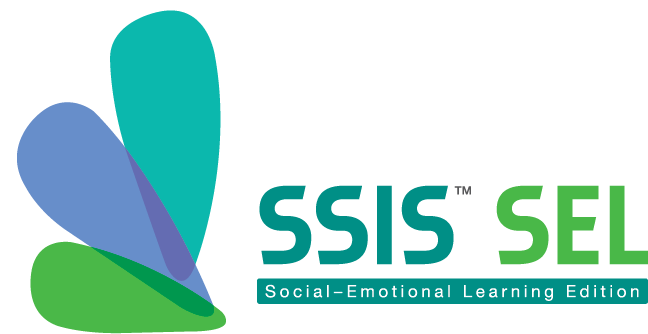
Teaching children to own their actions is a responsible decision making skill that is highly valued by teachers, parents, and school leaders. Many young children have difficulty with this skill but it can be taught and developed through a number of opportunities afforded children in most schools (Elliott & Gresham, 2007). This intervention brief describes how to teach an entire classroom of students how to own their actions using the intervention resources of the SSIS™ SEL Edition Classwide Intervention Program (CIP; Elliott & Gresham, 2017a).
Overview of the SSIS SEL Edition CIP
The SSIS SEL Edition CIP provides teachers and other interventionists with a SAFER—Sequenced, Active, Focused, Explicit, Responsive— way to teach children ages 4 to 14 years up to 23 skills that represent the social−emotional learning (SEL) competencies of self-awareness, self-management, social awareness, relationship skills, and responsible decision making. These competency domains are based on the SEL framework defined by the Collaborative for Academic, Social, and Emotional Learning (CASEL, 2012) and are popular in many SEL programs across the country. The responsible decision making skill domain, as assessed by the SSIS SEL Screening/Progress Monitoring Scales (Elliott & Gresham, 2017b) and taught in the SSIS SEL Edition CIP, focuses on five skills: Do the Right Thing, Own Your Actions, Respect Other People’s Things, Do Your Part in a Group, and Listen to Different Ideas. To successfully employ these skills, students need to understand themselves and their feelings and to be respectful of other people and the behavior expectations or rules of the settings they are in.
To teach social−emotional skills such as owning your actions, the SSIS SEL Edition CIP uses a six-phase process: Tell, Show, Do, Practice, Monitor Progress, and Generalize. This process has been shown to be engaging and has been implemented with high integrity by teachers in hundreds of classrooms. DiPerna and colleagues (2015, 2016, 2017), in a randomized control trial in six elementary schools funded by the U.S. Department of Education, provided strong evidence to support the SSIS SEL Edition CIP’s six-phase program. Specifically, these researchers reported that using the six-phase process resulted in students (1) learning social−emotional skills and performing these desired behaviors more frequently, (2) concurrently reducing the frequency of many common externalizing problem behaviors, and (3) increasing academic engagement and in some cases achievement test scores. This research documenting the triple positive impact of the SSIS SEL Edition CIP resulted in CASEL designating it “a SELect program for elementary students” (https://casel.org/guideprogramssocial-skills).
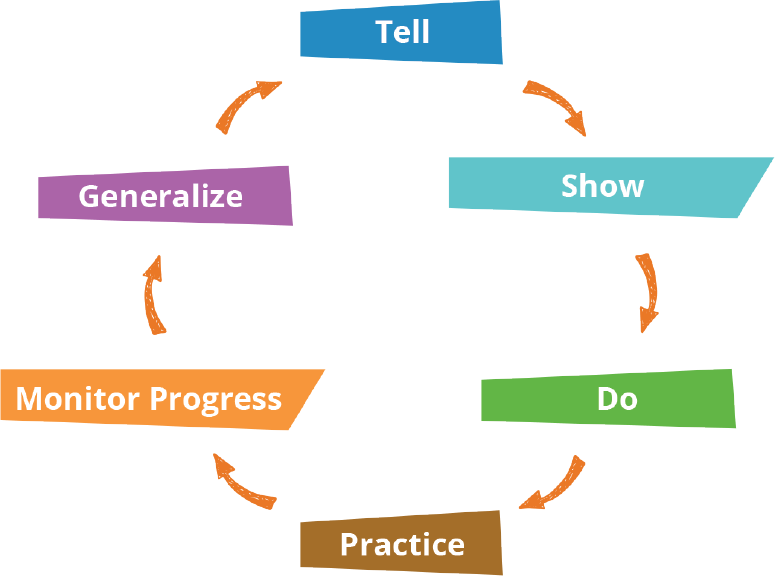
Teaching a responsible decision making skill: Own your actions
In the SSIS SEL Edition CIP, owning your actions is defined as being responsible for the decisions and choices you make and the actions you take. The steps for this skill are outlined in the Unit 12: Own Your Actions Skill Steps Cue Card and are described as follows: Step 1: Think about what happened and what you did to cause it. Step 2: Tell others what you did. Step 3: Feel and talk about how you feel about the action. Step 4: Ask what you can do to make it better. Using the six-phase SSIS SEL Edition CIP instructional process, the key actions and activities for both the teacher and a classroom of students are listed in the table below. By following this instructional process, most teachers can teach a skill lesson in 25 to 30 minutes and provide an intervention program that students enjoy and learn from.
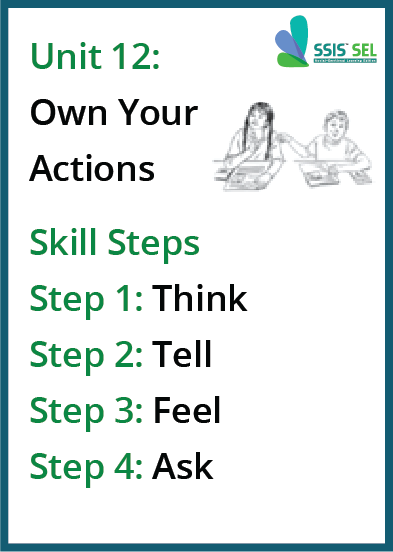
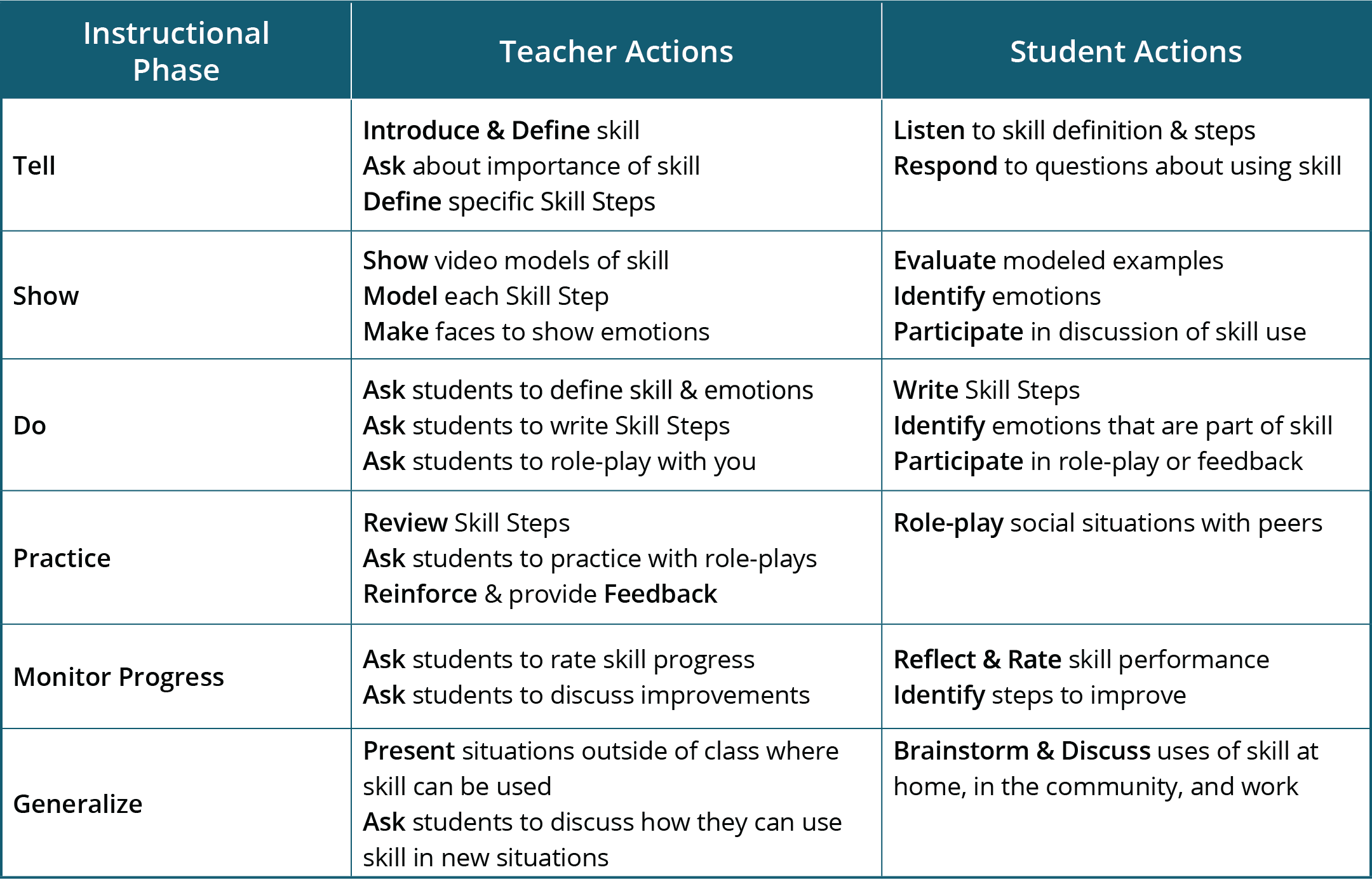
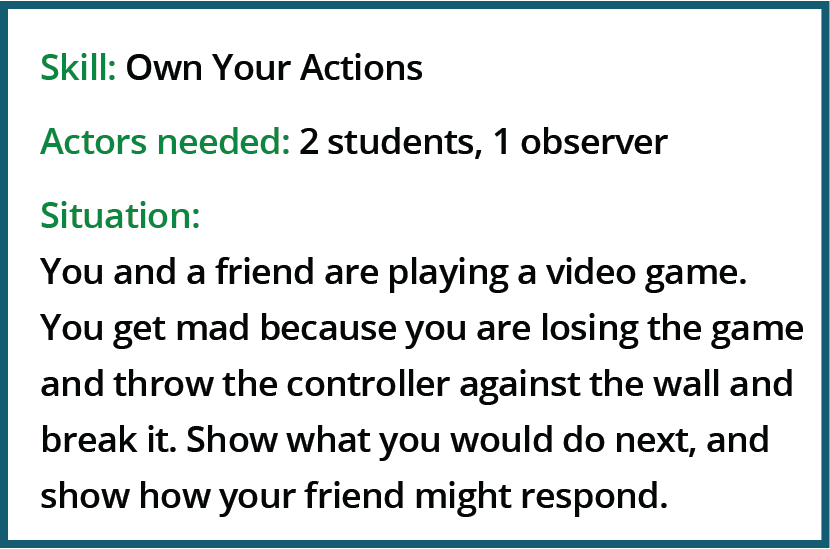
At the center of this process is a series of role-play situations (illustrated in the accompanying box) that students practice and then receive feedback on each Skill Step in a supportive classroom environment. After practicing a skill, students monitor their progress using a simple four-level scale and are expected to identify which step(s) need improvement. Teachers and students are encouraged to create and act out new role-play situations that are authentic to their school or community to increase the likelihood of generalizing the skill. With these activities and the addition of other SSIS SEL Edition CIP resource materials−PowerPoint™ lesson presentations, video clips, Emotions Cue Cards, Student Engagement Records−all students will be engaged and the intervention is simplified for teachers!
References
Collaborative for Academic, Social, and Emotional Learning. (2012). Effective social and emotional learning programs. Retrieved from https://casel.org/wp-content/uploads/2016/01/2013-casel-guide-1.pdf
DiPerna, J. C., Lei, P., Bellinger, J., & Cheng, W. (2015). Efficacy of the Social Skills Improvement System Classwide Intervention Program (SSIS-CIP) primary version. School Psychology Quarterly, 30(1), 123–141. doi:10.1037/spq0000079
DiPerna, J. C., Lei, P., Bellinger, J., & Cheng, W. (2016). Effects of a universal positive classroom behavior program on student learning Psychology in the Schools, 53(2), 189–203. doi:10.1002/pits.21891
DiPerna, J. C., Lei, P., Cheng, W., Hart, S. C., & Bellinger, J. (2017). A cluster randomized trial of the Social Skills Improvement
System-Classwide Intervention Program (SSIS-CIP) in first grade. Journal of Educational Psychology, 110(1), 1–16. doi:10.1037/edu0000191
Elliott, S. N., & Gresham, F. M. (2007). Social Skills Improvement System Classwide Intervention Program teacher’s guide. Bloomington, MN: NCS Pearson.
Elliott, S. N., & Gresham, F.M. (2017a). SSIS SEL Edition Classwide Intervention Program manual. Bloomington, MN: NCS Pearson.
Elliott, S. N., & Gresham, F. M. (2017b). SSIS SEL Edition Screening/Progress Monitoring Scales [Measurement instrument]. Bloomington, MN: NCS Pearson.
Stephen N. Elliott, PhD, is the Mickelson Foundation Professor at Arizona State University and the co-author of the SSIS SEL Edition Assessments and Classwide Intervention Program.
© 2018 Pearson Education, Inc. or its affiliates. All rights reserved. Pearson and SSIS are trademarks, in the US and/or other countries, of Pearson plc. LRNAS15520 EL 9/18
